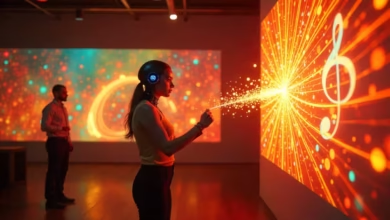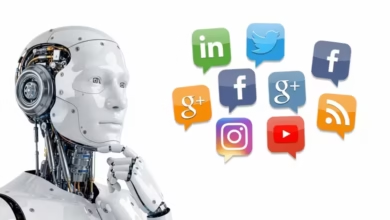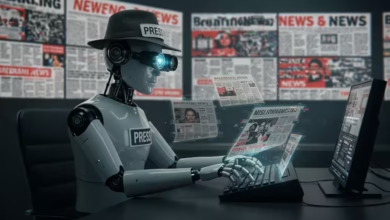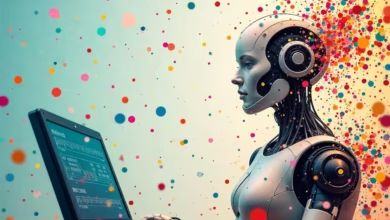How AI Filters Work on Snapchat, TikTok, and Instagram
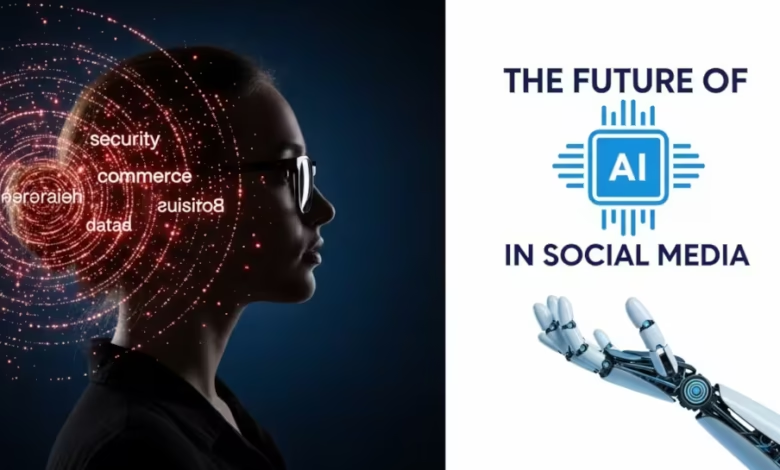
AI filters social media have transformed user engagement across platforms like Snapchat, TikTok, and Instagram. This blog post delves into the essentials of AI filters explaining how they utilize face recognition technology to deliver real-time effects in augmented reality (AR). By leveraging beauty AI, these filters enhance user experience, making interactions more appealing and fun. The article highlights the profound impact these filters have on user engagement, driving increased content creation and sharing. Additionally, it provides actionable takeaways for creators and brands looking to effectively integrate AI filters into their social media strategies ensuring they remain relevant in a highly competitive digital landscape. Understanding these dynamics allows users to harness the creative potential of AI filters while maximizing their reach and influence across social media platforms.
Understanding The Basics Of AI Filters In Social Media

AI filters in social media platforms like Snapchat, TikTok, and Instagram have transformed the way users interact with their content. These innovative tools utilize face recognition technology to create engaging experiences allowing users to modify their appearances or add playful enhancements instantly. As the demand for creative expression continues to rise, the effectiveness of these AI filters in capturing user attention and fostering engagement cannot be overstated. By leveraging advanced algorithms and machine learning, social media applications provide users with an array of options that enhance interactions and encourage sharing.
Key Objectives of Using AI Filters
- Enhance user engagement through creative visual effects.
- Increase visibility and shareability of content.
- Provide personalized experiences that resonate with individual users.
- Encourage exploration and experimentation among users.
- Utilize real-time analytics to refine filter offerings.
- Streamline the creation process for user-generated content.
As brands recognize the power of AI filters social media, they’re increasingly integrating these effects into marketing strategies. This shift is aimed at tapping into user-generated content, driving forward brand recognition while maintaining a fun, interactive format. By understanding the basic functionalities and objectives of AI filters, businesses can create campaigns that resonate with their audiences and capture attention in an overly competitive digital space.
How Face Recognition Powers Real-Time Effects In AR Filters

Face recognition technology serves as the backbone for real-time effects in augmented reality (AR) filters across popular social media platforms like Snapchat, TikTok, and Instagram. By mapping facial features and movements this technology allows for dynamic alterations that enhance user engagement and creativity. Users can apply playful face masks change facial features or even add entirely new dimensions to their selfies. The integration of AI filters social media has revolutionized how individuals express themselves and share unique visual content.
These AR filters rely on sophisticated algorithms that analyze facial landmarks and expressions with remarkable accuracy. Once a user activates a filter, the face recognition system detects key features such as the eyes nose, and mouth, facilitating the seamless application of effects. This process occurs in milliseconds enabling users to interact with the filters in a fluid and engaging manner. As these technologies advance, their capabilities have significantly broadened, paving the way for increasingly complex and innovative effects that keep users coming back for more.
| Platform | Popular Filters | Main Features |
|---|---|---|
| Snapchat | Dog Filter, Flower Crown | Real-time AR, facial recognition, and customization options. |
| TikTok | Beauty Plus Emoji Face | Dynamic effects synchronizing with music and voiceovers. |
| Face Distortion, Virtual Makeup | Interactive filter effects with community-generated content. |
Implementing face recognition technology in AR filters involves a series of crucial steps that ensure functionality and user satisfaction. Features like lighting adjustments and expressive animations are pivotal since they significantly impact the overall experience. By continuously refining these elements each platform keeps its audience engaged, fostering a sense of community within the user base.
Steps To Enable Face Recognition
- Access the camera feature of your preferred social media app.
- Navigate to the AR filters section.
- Select a face filter that interests you.
- Ensure proper lighting for clear facial detection.
- Position your face within the frame to maximize recognition.
- Engage with the filter by moving your head or making facial expressions.
- Share your creative output with your followers.
Technical Aspects of Face Recognition
The technical framework behind face recognition in AR filters involves intricate deep learning models that learn to recognize facial patterns. These models are trained on massive datasets containing diverse facial images to enhance their accuracy and reliability. Innovations in this area promise even more impressive functionalities as the technology evolves allowing users to experience lifelike interactions and immersive content.
Real-World Examples of AR Filters
Social media platforms leverage AR filters to create engaging user experiences which are both entertaining and functional. For instance, Snapchat’s dog filter became a cultural phenomenon, turning ordinary selfies into amusing pet portraits. Similarly, TikTok filters often complement music trends encouraging users to get creative with their video content. Instagram’s beauty filters target consumer engagement by allowing users to experiment with virtual cosmetic applications showcasing the transformative potential of AI filters social media.
The Impact Of Beauty AI On User Engagement
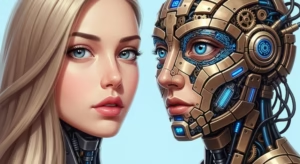
The rise of beauty AI has dramatically transformed user interaction across social media platforms like Snapchat, TikTok, and Instagram. These platforms leverage AI filters to enhance user experience by enabling fun, engaging, and personalized content creation. With the growing popularity of visual storytelling, beauty AI plays a crucial role in attracting users and encouraging them to share their experiences ultimately boosting engagement metrics.
Benefits Of Using Beauty AI
- Enhances Self-Confidence: Users can see themselves in new, flattering ways which increases their overall satisfaction with their appearance.
- Encourages Creativity: With various filters available, users are inspired to experiment with their looks and create unique content.
- Fosters Community Engagement: Sharing and comparing filter experiences with friends creates a sense of belonging and community.
- Boosts Brand Partnerships: Beauty AI attracts brands seeking innovative ways to connect with a tech-savvy audience, leading to sponsorship opportunities.
- Increases Content Shareability: Well-designed AI filters often go viral, promoting users’ content beyond their immediate followers.
- Facilitates Social Connectivity: Users can engage with others who use similar filters fostering relationships through shared interests.
Another significant aspect of beauty AI is its ability to provide real-time feedback and improvements for users. This instant gratification can lead to longer content creation sessions as individuals are more likely to experiment with various filters to achieve their desired look. The engaging nature of AI filters social media encourages users to invest time in perfecting their posts ultimately increasing the amount of time spent on these platforms.
Overall, beauty AI has a profound impact on user engagement, driving more meaningful interactions among users. By incorporating these sophisticated technologies social media platforms meet the desires of their audiences while providing valuable tools for self-expression. As these tools continue to develop, we can expect even greater levels of user engagement and creative possibilities in the ever-evolving landscape of social media.
Actionable Takeaways For Leveraging AI Filters Effectively
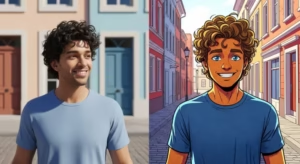
To effectively utilize AI filters social media, it’s essential to understand the various ways these features can enhance your content and engage your audience. By leveraging real-time effects brands and content creators can craft immersive experiences that resonate with their audience, prompting more significant interaction and sharing. Implementing these filters can transform ordinary posts into captivating visual narratives allowing users to express their individuality and creativity while also pushing brand messages forward.
Next Steps To Enhance Engagement
- Identify your target audience and tailor filters to fit their preferences.
- Experiment with various real-time effects to find what captures attention.
- Encourage user-generated content featuring your filters to boost community involvement.
- Monitor engagement metrics to adjust strategies based on performance.
- Collaborate with influencers to extend the reach of your AI filter campaigns.
- Utilize analytics to refine filter features and enhance user experience.
- Stay updated on emerging trends in AI filters to keep your content fresh.
As you explore these steps remember that engaging content often leads to higher retention and shareability. By effectively leveraging AI filters social media, you can not only elevate the aesthetic appeal of your posts but also foster deeper connections with your followers. That way, you can ensure that your content stands out amidst the vast digital landscape, tapping into the growing demand for innovative and interactive social media experiences.
For similar articles, please visit: AI in Art, Creativity & Media
Homepage / humanaifuture.com

